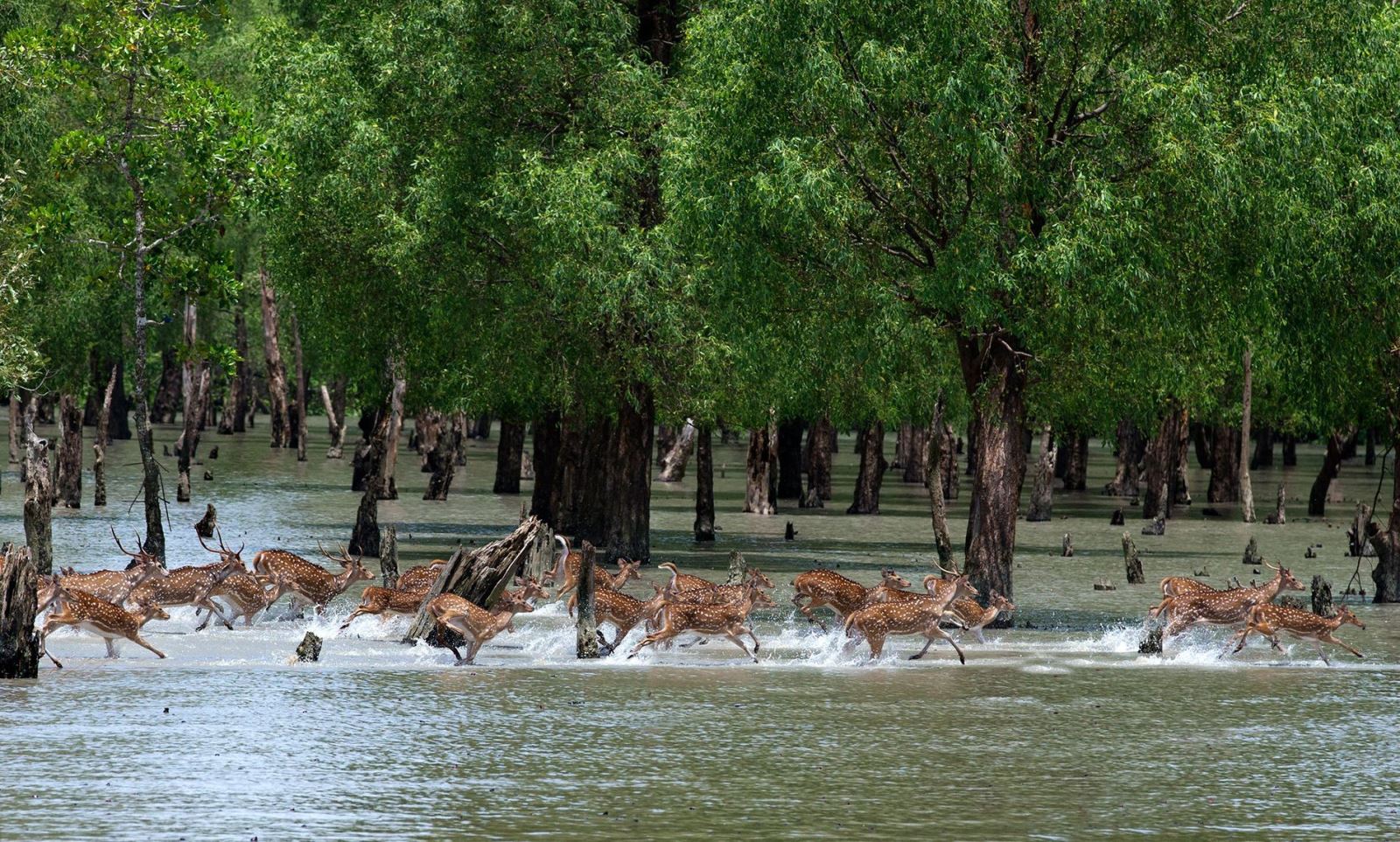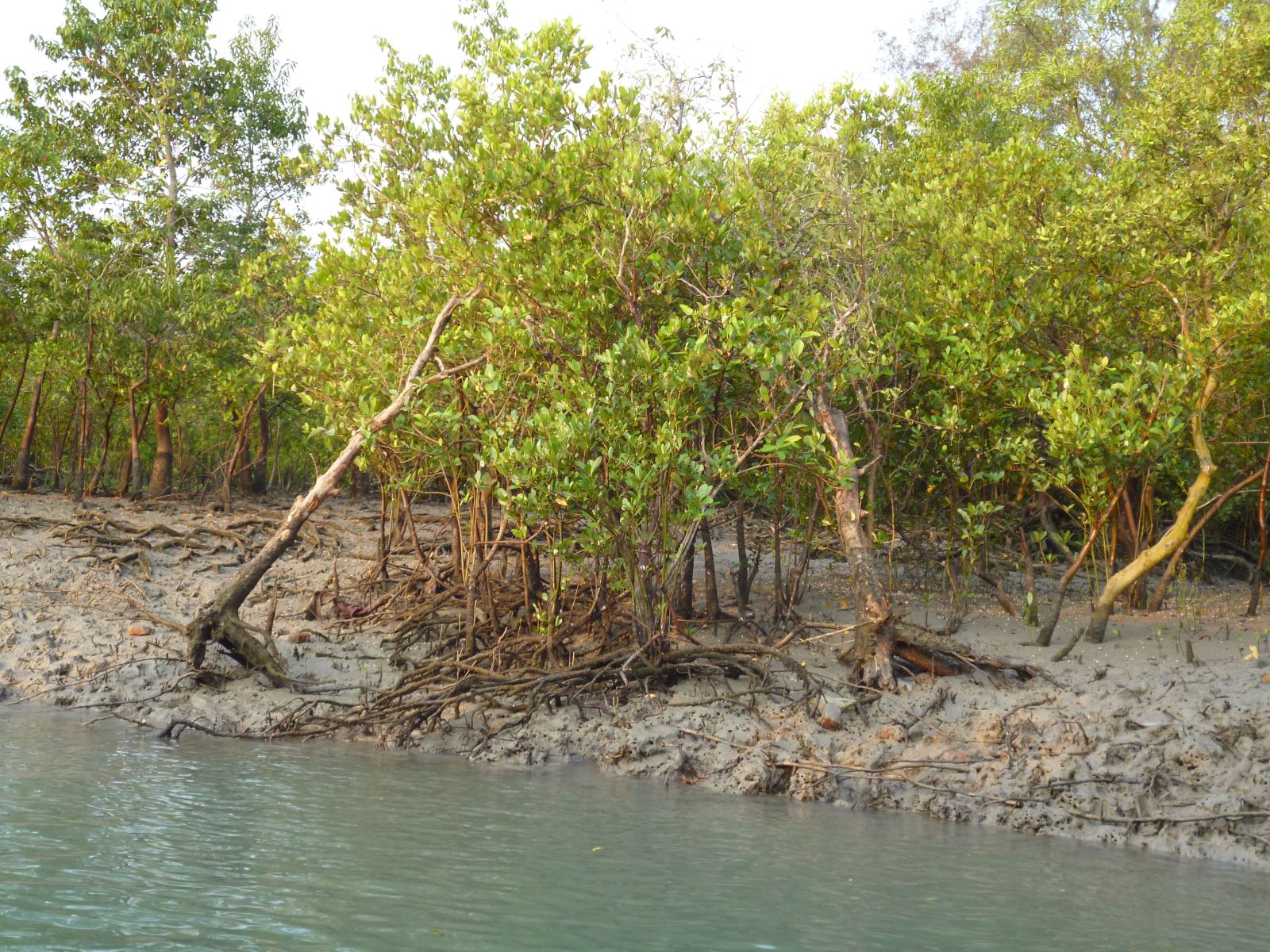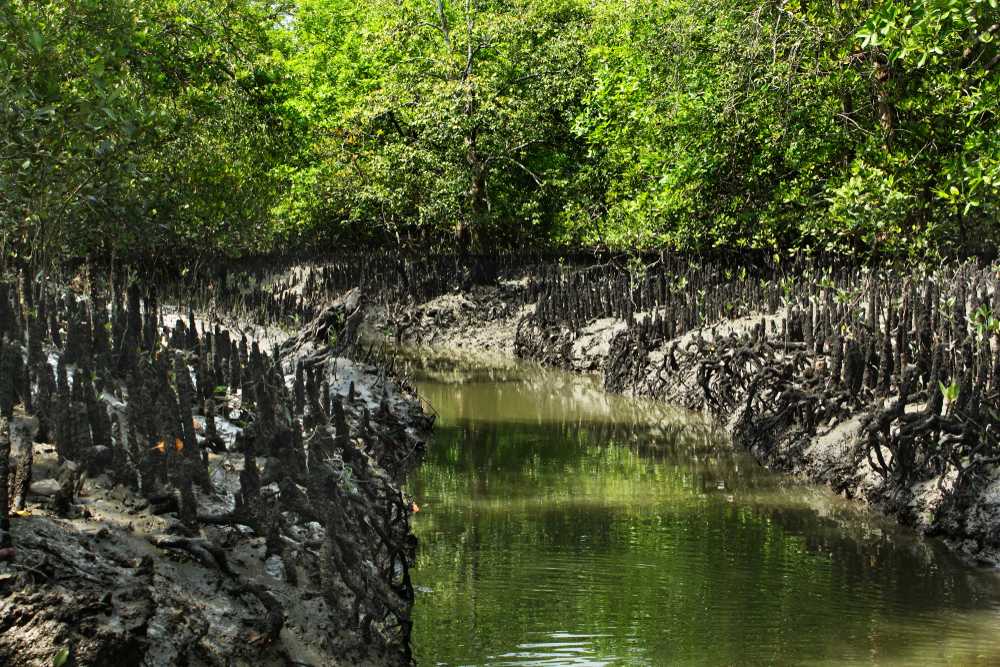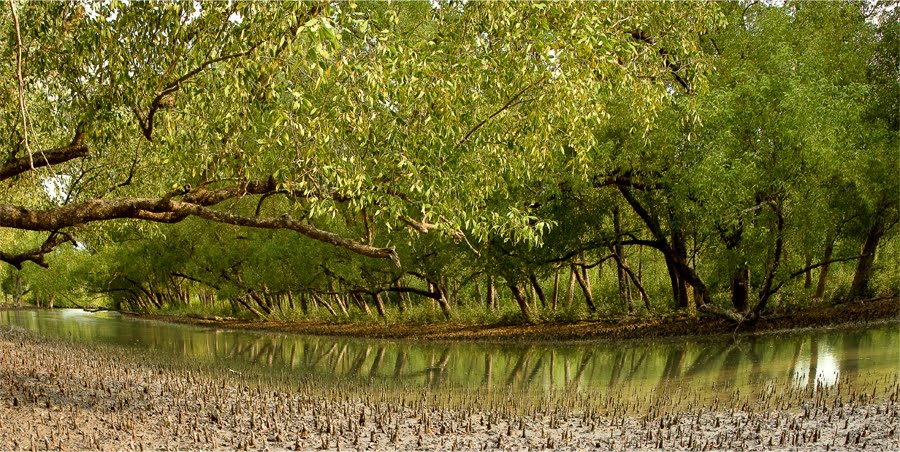The Sundarbans mangrove forest covers an area of about 10,000 km2 (3,900 sq mi), of which forests in Bangladesh's Khulna Division extend over 6,017 km2 (2,323 sq mi) and in West Bengal, they extend over 4,260 km2 (1,640 sq mi) across the South 24 Parganas and North 24 Parganas districts. It is the world's largest mangrove forest.
The most abundant tree species are sundri (Heritiera fomes) and gewa (Excoecaria agallocha).

Besides the sundari, other tree species in the forest include Avicennia, Xylocarpus mekongensis, Xylocarpus granatum, Sonneratia apetala, Bruguiera gymnorhiza, Ceriops decandra, Aegiceras corniculatum, Rhizophora mucronata, and Nypa fruticans palms.

Twenty-six of the fifty broad mangrove species found in the world grow well in the Sundarbans.

The commonly identifiable vegetation types in the dense Sundarbans mangrove forests are salt water mixed forest, mangrove scrub, brackish water mixed forest, littoral forest, wet forest and wet alluvial grass forests.

The Bangladesh mangrove vegetation of the Sundarbans differs greatly from other non-deltaic coastal mangrove forests and upland forests associations. The forests provide habitat to 453 faunal wildlife, including 290 bird, 120 fish, 42 mammal, 35 reptile and eight amphibian species.

According to en.wikipedia











